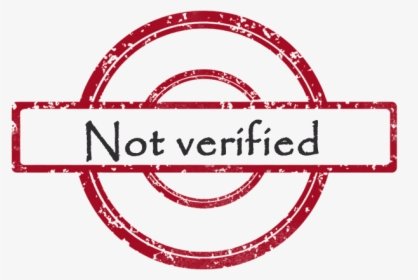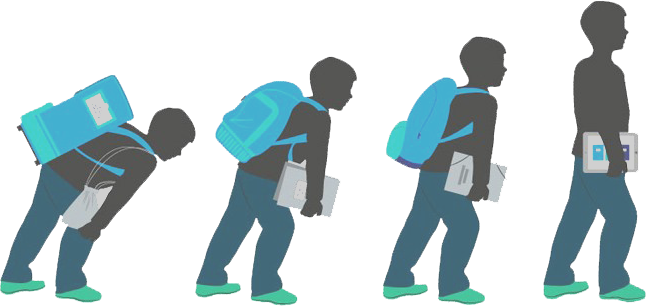Online education, often known as distance education refer to that mode of studying wherein there is a distance between an education institution, teachers and students. Online education can also be known as e-learning. Earlier, this kind of education was usually conducted where the correspondence courses were provided to the students. But now, when the world was hit by the pandemic COVID-19, every educational institution thought of breaking the monotony and decided to adopt online education on a worldwide basis.
Thanks to the technology that help and support this mode of education, that helps each and every student to learn through the internet while sitting at all the corners around the world while performing the other activities of our day to day lives.
Online mode of education will be adopted by approximately by every educational institution irrespective of the geographical boundaries, languages, religions, etc.

History of online mode of education
Although, online mode of education has come into run recently, but this mode of education can also be called as the traditional one. The first time when the online mode of education was practiced was 1840s, by Sir Isaac Pitman, who taught the system of shorthand. He did this by mailing texts transcribed into shorthand on postcards and in return, his students sent him transcriptions for correction. Student’s feedback played a crucial role in the innovation of Sir Pitman.
The early beginning of the online mode of education was a successful one, therefore, to establish these courses on a formal basis, the Phonographic Correspondence Society was founded three years later.
In 1873, the first correspondence school, Society to Encourage Study at Home was founded in United States.
Later, in 1894, the first distance learning college, Wolsey Hall, Oxford was founded in United Kingdom.
The Open University is another form of online education. It was founded in United Kingdom by the Prime Minister of Labor government, Harold Wilson.
Later, the Open University modernized the possibility of the correspondence course to create a respectable learning alternative to the traditional form of education. Approximately, all the Open Universities use technologies of distance education as the mode of delivering method. However, some of them requires the attendance of the students online.
In India, there are many universities like- IGNOU, IIT-BOMBAY, etc. are providing with online education. These are short-term courses, diploma courses, degree courses etc. Some of the Open Universities prefer taking examinations with the help of the online platforms, so that every student is able to give the examination irrespective of their locations or health issues. They need not have to be physically present in the examination hall and write their exams in a traditional way.
Recently, during the outbreak of the COVID-19, all the schools, colleges and universities were shut down worldwide, approximately every educational institution switched to online mode of education. They started conducting their classes and lectures on online applications like ZOOM, Google classroom, Google Meet, etc.
Earlier, the study materials were sent through postal services, but now, online platforms are used in order to carry out the education of the students. There are many job portals that are now, providing up with the short-term courses. A person needs to get registered by paying up charges and the courses are available for a particular period. A regular test is taken within the subscribed course, which helps in analysing that whether a person is learning the skills or not.
Resources of online mode of Education

Various kinds of educational institutions provide their students with different types of resources. These resources help them in carrying out the studies in a successful manner and help them in upgrading them in a faster and easier manner. These can be updated online itself and can be read by each and every student. These resources are:
- E-textbooks
- Journals
- Lectures
- Webinars
- Question and answer session
- Debate
- Group discussions
All of these resources get updated on a regular basis, in accordance to the requirements of the students and the surroundings. Students do not have to waste their money in buying up the new versions of the textbooks.
There are many online portals like LinkedIn Learning, Udemy, Coursera, Internshala, etc. that helps in providing students with short-term courses. All that they have to do is to pay a minimal charge for the course they want to apply, give a test after every module and gain the certificate.
FACTS
*Approximately, more than 6 million people are taking online education.
**The average age of the subscribers is from 32-35 years.
***Graduate students are more likely to take the online courses.
****Online mode of education is cheaper than the traditional or the offline mode of education
Advantages and disadvantages of Online Mode of Education
ADVANTAGES-
- Flexible in nature

Online mode of education is flexible in nature. Students have an experience of freedom in choosing the time slots of their classes. They are not bounded with the time limits and a strict schedule. Even in some institutes, it is not important to mark the attendance for the students. It is self-paced in nature.
- Easily accessible

With the help of the rapid transformation in the technology, online learning can be done irrespective of the location. Whether students are traveling or sitting on a couch of our dining rooms, they can easily access and study being in our comfort zones. But by being in the comfort zones, it is also important for students to pay attention towards the online tutors and their instructions and must follow them strictly.
- Less cost

Online mode of education helps in reducing the cost. Students need not have to buy expensive textbooks in order to gain knowledge. All that they need is to have good internet connection, internet friendly gadget and sometimes, availability of subscribed courses. There are some websites that provide with great short-term courses, but these are available when a particular amount of money is paid by the student. In the course, various skills are taught to the students and regular tests are conducted, after that the certificates are issued to them.
- Hub of various skills

Internet is vast in nature. It is web in which every kind of information is available regarding every element present in the nature. The websites or the portals that help in providing the online education to the students acts like a hub of skills. All kinds of skills in the field of science, art, information technology, management, commerce, data analysis, etc. are available at one place.
Earlier, there was a single institute for a single field, but now students can learn everything they wish for by being at one place.
- Building networks

Whether student wants to learn from the courses available in their own country or from somewhere outside their country, online mode of education helps in building up the network. For instance, if a student wants to learn a skill from the university available outside their country, they can easily learn them by paying a small amount of that particular course, that helps them in building the networks across the borders of the nation. Whether it is the network building with the tutors or with the fellow students, it turns out to be fruitful, as it helps in gaining knowledge about what is happening across the globe.
- Environment friendly

Online mode of education is environment friendly. Earlier, during the traditional or offline mode of education, several trees were cut down in order to make the papers, so as to make the textbooks. There was a rapid reduction in the number of trees globally, that was harmful in nature. But now, no trees and environment are harmed, as everything is done online. At some institutes, they have started conducting examination online, so that they don’t harm the environment around.
DISADVANTAGES-
- Lack of accreditation

While accessing the online courses, there can be chances of the lack of accreditation for a particular course. Everyone wants to earn a degree with a good review and accreditation. If students pay for a course, earn a degree, but has no accreditation, then the degree will be of no use. Therefore, proper verification is required for the accreditation of any online course in order to save time and money.
- Absence of the traditional environment

Human beings are interdependent on each other. We cannot survive alone.During the online mode of education, there is an absence of tutors and the other students and a face to face interaction to get the feel of the real classrooms. Human beings are social animals. They cannot survive without each other. Online access to education is flexible, but there is a point where the absence of the real classroom is felt by everyone.
- Harmful for health

Excessive use of mobile, laptops, tablets etc. leads to the degradation of one’s health. Regular use of the electronic gadgets leads to weakening of the eye sites of the students, severe headaches, that leads to the lack of concentration of the students. There are many hazardous diseases that are caused by the rays that comes out of the electronic devices. Bad posture of students while taking online classes in their comfort zones also leads to degradation in the of students.
- Not accessible by everyone

These days, when there is a revolution taking place in the field of technology, majority of the population has an internet friendly device in their hands. But there are poor people, who cannot afford these gadgets or cannot use the gadgets. For them, it becomes next to impossible to access the online mode of learning. They have to follow the traditional way of learning. This leads them to be isolated from the world and hence, they are not able to update themselves with the revolutions taking place outside their world.
Online mode of education- A New Recognition

Online mode of education is now, being preferred by each and everyone. During the outbreak of the COVID-19, it became a mandatory thing to be introduced in the environment of education, but later, online learning will be the most preferred one too.
With the development of the new technology day by day, there will be the introduction of more options for online education. Online degree programs will get a recognition in the future. Students these days, prefer learning online at their own pace, so this gives everyone a good idea about how the things will be in the future. Every online courses and degree programs will start getting the accreditation and a good quality programs will be introduced, so that students won’t be wasting their time and money over the low-quality online programs.
Online learning is not the next big thing. It is the now BIG THING.
-DONNA J. ABERNATHY






